HIStalk Interviews Michael Schmidt, Managing Director of Strategic Innovations, Orlando Health
Michael Schmidt, MBA is managing director of strategic innovations at Orlando Health’s Strategic Innovations program in Orlando, FL.

Tell me about yourself and the organization.
I’m the managing director of Orlando Health’s Strategic Innovations program. My responsibility is to coordinate our internal and external innovation efforts.
My colleague Callie Patel from Healthbox and I just presented at HIMSS19 on developing internal innovation competencies. We did a case study of Orlando Health’s journey over the past two years in going from having no formal innovation program – no structure, resources, or any of that — to having a formalized program where we run an annual internal incubator. We have various pathways for different types of projects. Then we have a venture fund to invest in external healthcare startups that align with what we’re trying to do.
Many health systems are experimenting with incubators, accelerators, and innovation funds. What are they trying to get out of that, and what have we learned so far?
There was a quote that was a theme during HIMSS that if you’ve seen one innovation center and program, you’ve seen one innovation center and program. Everybody’s trying to tackle similar concepts and strategies, but the execution looks pretty different. The more I’ve started scan the horizon and look at other health systems, I’ve been surprised how many have a program like this. Maybe not the same setup or focus on internal and external at the same time, but most of the major health systems in the country have moved in this direction somehow.
We might be a little different. First and foremost, our goal with an innovation program is culture change. We’re a $3.2 billion community health system across central Florida and operate at a very effective level, but we have never had a lot of the core competencies that a university hospital system or big hospital system in a large metro area might have. We’re playing catch-up a little bit.
We realized that a lot of what we needed to accomplish was education and acclimation for a lot of our physicians and team members to understand what innovation means to us and why we’re doing what we’re trying to do. Then, how they can play an effective role in that. Secondary to that for now is the ROI on the initiatives. Over time, that will change, but we’ve been trying to focus on engagement with our employees and our physicians.
I credit our partner Healthbox for their structure and their philosophy. Technically they’re a consulting group, but they’ve partnered with us. It’s almost like I added 10 to 12 people to my team from Day One in working with them. We’ve set up a consistent process, a thought structure and philosophy on what types of ideas we are looking for, and the criteria we used to assess those and to decide which ideas advance.
For our internal incubator, which we call the Foundry, we only accept four ideas each year. We would rather have a small number of successful projects than dozens that are stalled out in some different phase of development. We ask our team members and physicians to look for ideas that solve pain points that they’re experiencing. We have criteria that we assess these ideas on. Throughout the entire fall, the application window is open for people to submit their ideas, providing rationale as to what impact it will have internally. Will it save us money, help us consolidate the supply chain, or improve quality?
We look at five facets of that application and score the idea and the innovator across these things. What is the commercial potential? Is this idea eventually going to fit in a market that’s super competitive, or is there a decent-sized niche that we could carve out based on how unique this idea is? How innovative is the idea? Is it a small iteration on an existing idea or product, or is this big-shift, game changer, completely new type of product or service?
We also look at the person who brought the idea forward. Not everybody has the same natural entrepreneurial skills, so part of what we assess is what type of support structure, education, and team we will need for this person to be able to drive their idea forward.
Finally, we look at the potential internal impact and how it aligns with our strategic plan and the pillars of that plan.
We score everything across those five categories. We rank them, and then I have a committee of about 30 senior leaders and physicians from across every major area of the organization. We sift through those ideas that are currently ranked based on those numerical scores and then we start to challenge assumptions. We ask each other what we think will work with this particular idea and try to whittle that down to the top four or five that we’ll end up choosing from to go into the program.
We do things a little bit differently than some of the other systems I’ve seen. This incubator is just for our employees and our physicians. It is specifically designed to develop Orlando Health’s intellectual property. The person who brought the project forward will drive it. They will be in charge of budget, if it gets to that point, and coordinating with the work group.
But at the end of the day, it is Orlando Health’s intellectual property. We will work with them to license it out or sell it. We will pursue those paths before spinning out something as a separate business. Then if it is profitable in some form or fashion, the person who brought that idea forward gets a significant portion of those those royalties.
A number of our key physicians said over the years, I’m working on stuff, doing research, coming up with these ideas, and I have nowhere to take them. I would love for Orlando Health to be the organization that drives this stuff forward. But until a couple of years ago, we didn’t have anywhere for them to go or any support to offer. Now they are excited that there’s a pathway for this stuff.
What kind of employees or physicians bring in ideas and what stage are those ideas in?
A year and a half ago when we first started this process, announced the concept, and opened up applications, we had no idea what we were going to get. We were pleasantly surprised across all fronts. Last year we had just over 60 applications. I would say probably 10 percent of them had a working prototype or very thoughtful design.
The rest were early-stage, sketch on the back of a napkin sort of concepts. That helped up shift a little bit to accommodate ideas at that stage. They need a lot more due diligence and a lot more planning to get to a place where we can start to build prototypes and things like that.
We’ve gotten ideas from almost every corner of the organization. Physicians have definitely been a lot heavier in the mix than other types of team members, and the physician ideas tend to be more developed. Sometimes they have put their own personal funds into developing it just to see if the concept works.
How do you determine which ideas have commercial market potential beyond solving Orlando Health’s problem?
My selection committee helps assess it. We pick people with different types of experience and backgrounds. We have a handful of people here that have worked in early-stage companies and have some of that insight. That’s where Healthbox as our partner comes in. Behind the scenes, they’re helping us guide the whole process, helping us with our criteria to move ideas forward. They also produce some pretty comprehensive research on each of the idea, such as a market scan and competition analysis, so we know what we’re looking at. Then an assessment of the resources the project might need to get each of those ideas to prototype and minimum viable product.
Do you get involved in whatever happens next in terms of actually creating a company around the idea?
We’ve staged it out appropriately to account for making sure that we’re staying on track, that things aren’t getting ahead of where they should be, and that we’re not setting aside too much in the way of funding. Each year, the four projects that go through the foundry process can come back and do a “Shark Tank”-like pitch to our executive team and other senior leaders and ask for a budget for the next 12 months.
We stage it out in 12-month increments to make sure that it’s manageable because these people still have their full-time jobs. Our funding allows them to set aside a set number of hours every week and those funds reimburse their department or practice so that their department is not losing anything with this person working on the project.
Mostly what we set aside funding for is bringing in external resources, whether it’s a software developer or a biomedical engineer to help us draw something out in CAD. We have checkpoints throughout that process where our team, other internal resources that we’ve lined up for assessment, and then Healthbox are making sure that those projects are on the right track and advancing the way we think they should.
But we’ve also said that overall, going through the foundry and getting to the end of that process does not mean that it is market ready. The foundry itself is one of the steps for validation, making sure we can put the idea through the paces. Will it do what we think it needs to do? Does it end up conflicting with other vendors we have or internal resources or processes that are in place? That process helps us understand how this would end up looking if we were to scale it across one facility or the entire organization.
Then if it continues to check out throughout that process, we start looking at who we would likely license or sell this to. What type of partners would be ideal? We haven’t had any projects get to that point yet, but we have a few that we’re starting to scan the horizon.
What does your team look like?
It’s a very small team right now. I feel like a one-man band most days. The senior executive that started this process is essentially our chief strategy officer. His title is senior vice-president of strategic management. Our broader team is responsible for all of the strategic planning and execution across the entire organization and we are tucked alongside that. It’s myself and an analyst who works for me.
But then we have the committee, and then a number of people throughout the organization have expressed a strong desire to partner with us to help the program continue to grow. We lean on a different person across that network based on what we need. What’s helped us be successful in standing this up so quickly is bringing in what I call adult supervision, a partner who’s experienced in this, like Healthbox.
What did you bring back from HIMSS19 that is most applicable to what you’re doing at Orlando Health?
That was my first year going. It is completely overwhelming. It was really hard to take in everything that was there. I almost wish it wasn’t so big.
But it’s fascinating to walk the vendor floor and see who the big players are. We have someone who helps us on our venture fund side and he said, “Start to look at the smaller companies that are on the periphery that have a really small space. When you come back next year, see who’s moved inward a little bit. See who has a bigger footprint. Pay attention to those types of moves.”
We were also looking at broader themes, trying to get a sense of where some of the technology is going, where some of these segments of the industry are going. It is so encouraging that healthcare in general is rapidly changing and the notion of digital health and that entire segment of companies and products and technology has really started to take off.
I sat through a number of presentations on the expo floor where they were demoing. Seeing the way that AI, chatbots, and virtual assistants are starting to impact the patient experience was cool. That was one of the things I took back to our team and relayed.
Patient experience is one of our top priorities this year, to solidify how we deliver a consistently excellent experience. We don’t always have the right tools. Historically we’ve had some silos, where different forms of technology that we had implemented didn’t necessarily talk to one another.
I’m trying to look at things from a 30,000-foot view and figure out where we can start to weave some of this stuff together, to see what’s available on the market that we could plug in and where there are gaps where we could create something internally that would help us move quicker.








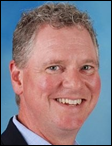

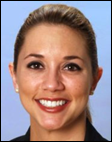
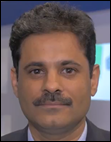

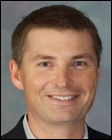


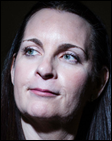
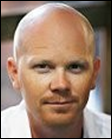
"A valid concern..." Oh please. Everyone picks the software they like and the origin of that software is an afterthought.…